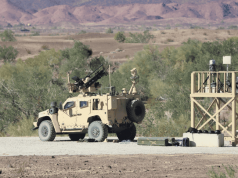The US Marine Corps has awarded BAE Systems a $184 million contract for the full-rate production of 36 amphibious combat vehicles, a next generation vehicle for the service’s ship-to-shore operations.
The full-rate contract comes less than a month after the Marine Corps declared the ACV met the requirements for initial operational capability (IOC) on November 13.
“As the ACV enters into service it will be providing highly advanced solutions for conducting maritime-based warfare operations and will play a vital role in the Marine Corps’ complex and challenging missions,” said John Swift, director of amphibious programs at BAE Systems. “For BAE Systems, full-rate production validates years of dedication and teamwork in partnership with the Marines to introduce this capability to the warfighter and leave our adversaries on the battlefield at a marked disadvantage.”
This first lot of full-rate production is planned to grow to 72 vehicles in early 2021, with the options calling for 80 vehicles annually over five years.
BAE Systems is currently under a $67 million contract modification awarded in June 2019 to develop new variants for the ACV family of vehicles program to enhance battlefield situational awareness and firepower. The contract calls for the design and development of the command (ACV-C) and the 30mm medium caliber cannon (ACV-30) variants. Design and development efforts have begun on both.
The ACV is an eight-wheeled vehicle that will provide protection similar to the mine-resistant ambush protected vehicle, with landward maneuverability and mobility that is superior to that of the AAV. Developed with teammate IVECO Defence Vehicles, the ACV provides substantially increased horsepower, with its six-cylinder, 690 horsepower engine, making it capable of land speeds exceeding 55 mph. It’s also designed to provide Marines the flexibility to address additional mission roles and future technologies through its modular design.
Full operational capability is scheduled for 2023.



























